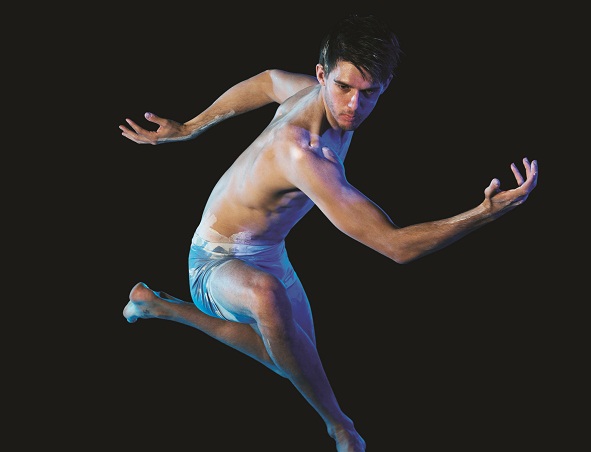Sydney Opera House
July 2011
By Lynne Lancaster
Belong gives us two very strong, exciting and powerful works from Bangarra in a new double bill entitled featuring About by Emma Kris and ID by Stephen Page.
All the hallmarks of the Bangarra ‘house style’ are evident. The magnificent dancers are strong and powerful, performing a blend of modern/contemporary and traditional Aboriginal/Islander dance. David Page and Steve Francis’ music is haunting, evocative and quite complex, sometimes including speech and/or Aboriginal chants. Emma Howell’s wonderful costume designs are full of delicate, flowing lines integrating well with Matt Cox’s subtle atmospheric lighting. Jacob Nash’s sparsely, elegant set design and the audio-visuals by Declan McMonagle enchant the eye.
Kris’ About is in four parts, exploring the idea of the four winds or seasons that scurry through the lives of her people in the Torres Strait islands. There are four fluid, turbulent sections – Zey, Kuki, Naygay and Sager, linked by Kris as an eerie storyteller figure in white, who emerges rocklike from dry ice at the beginning . Zey, the south, wind has four female dancers in aqua tunics and another in a long feathery dress, all in cool, fluid motion. There are many strong, diagonal arms that can be quite angular, use of the Graham deep plié, and an interesting style of retire and straight foot. Kuki, the northwest wind, is thunder and lightning, and is far ‘earthier’ than the previous section. The dancers are in greyish/brown costumes with arm and body markings, with the men in distinctive feather necklaces. Bodies seethe in a sculptural mass, performing sailing and rowing like movements and mimicking the kangaroo and other land creatures. For this segment the design is a fascinating hanging linear twisted wire almost like calligraphy. Naygay, the north wind, is the calmest, gentlest, of the four. Here we see some magnificent bark painting designs and dramatic use of silhouette as the dancers whirl and fly in layers of sinuous movement. Sager, the final segment, is based on the south-east wind. We enjoy a ghostly pas de deux where the dancers represent the movement of the dust, sand and wind.
After interval comes Page’s strong, powerful, thought provoking, but at times meandering, ID. Tracing bloodlines and reconnecting with traditional culture, it is a meditation on what it means to be an Aboriginal in this day and age. It has a timeless feel to it – at times futuristic, yet at others as if from the Dreaming .You can see the Graeme Murphy choreographic influence blended with traditional Aboriginal/Islander dance forms.
It is a searing, scathing comment on our society and Australian history, with the dancers ‘blacking up’ (with Vegemite) for the class photo, and shocking prison scenes where a dancer is eliminated, tortured and fumigated like an insect. Talented Patrick Thaiday has an extraordinary solo where he is trapped and asphyxiated. There is also reference to the Stolen Generation and the terrible laws of the time. Towards the end there are wonderful spooky scenes with forest-like totems, again demonstrating the link with the land and nature. We enjoy marvelous set design and lighting, as well as magnificent choreography.
The final scene builds from a winding, snaky conga line of dancers leading to a volcano like circle of energy where the dancers toss white chalk into the air. ‘Ashes to ashes, dust to dust’, or is it more hopeful? There are so many layers of meaning and so many issues to ponder. What a challenging visual feast.
Photo by Jason Capobianco















